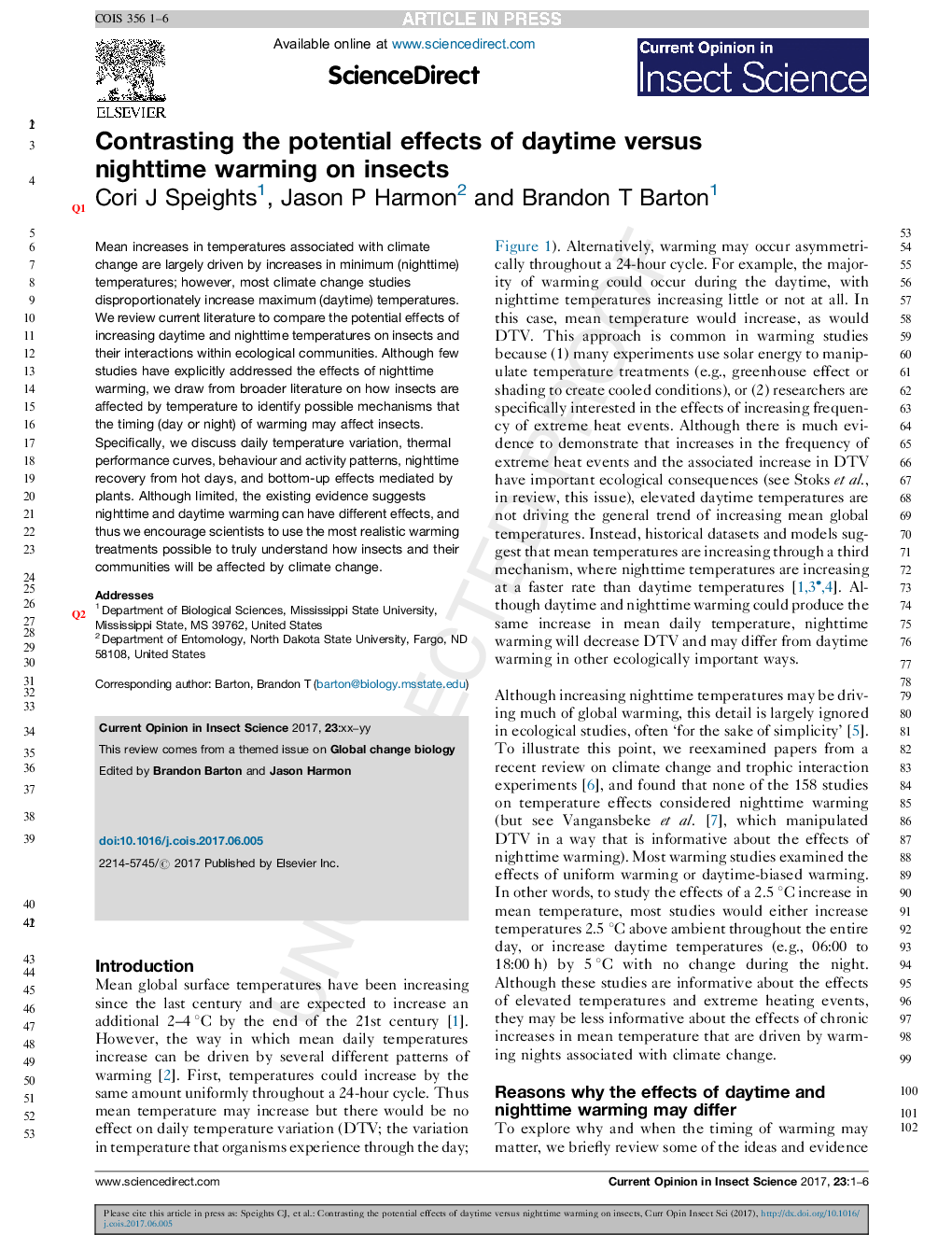| Article ID | Journal | Published Year | Pages | File Type |
|---|---|---|---|---|
| 5761159 | Current Opinion in Insect Science | 2017 | 6 Pages |
Abstract
Mean increases in temperatures associated with climate change are largely driven by increases in minimum (nighttime) temperatures; however, most climate change studies disproportionately increase maximum (daytime) temperatures. We review current literature to compare the potential effects of increasing daytime and nighttime temperatures on insects and their interactions within ecological communities. Although few studies have explicitly addressed the effects of nighttime warming, we draw from broader literature on how insects are affected by temperature to identify possible mechanisms that the timing (day or night) of warming may affect insects. Specifically, we discuss daily temperature variation, thermal performance curves, behaviour and activity patterns, nighttime recovery from hot days, and bottom-up effects mediated by plants. Although limited, the existing evidence suggests nighttime and daytime warming can have different effects, and thus we encourage scientists to use the most realistic warming treatments possible to truly understand how insects and their communities will be affected by climate change.
Related Topics
Life Sciences
Agricultural and Biological Sciences
Agronomy and Crop Science
Authors
Cori J .Speights, Jason P Harmon, Brandon T Barton,
